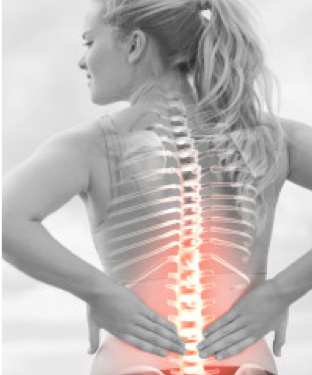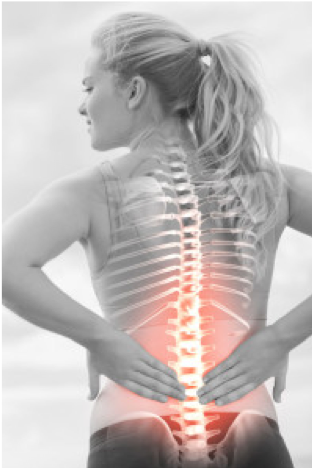Barriers to Care: Opioids Are Cheap and Easy
New research on coverage policies confirm what my patients and I have known for years
By Sherry McAllister, DC
A recent study published in JAMA Open Network seems to confirm what I and my patients have known for years: health insurers are steering their members toward pharmacological, often opioid-based, management for chronic pain.
The study, “Coverage of Nonpharmacologic Treatments for Low Back Pain Among U.S. Public and Private Insurers,” shows that payer-imposed barriers to care such as $60 copays, visit limits and onerous medical necessity determinations, are disincentivizing their members away from nonpharmacologic care, even though the care is widely covered. This is despite the substantial evidence supporting the effectiveness of chiropractic care and physical and occupational therapy for chronic pain. Meanwhile, according to an associated commentary in the publication, Christine M. Goertz, DC, Ph.D. and Steven Z. George, PT, Ph.D., cite research that the preferred generic opioid prescriptions cost members only $10 a month.
To that avail, I have a patient with chronic uncomplicated low back pain who finds great relief with chiropractic. Unfortunately, this patient can only receive care if all the allotted paperwork, authorization and deductible has been met. Problematic is that this patient typically needs one treatment every few months to contain her discomfort. This makes managing chronic pain extremely difficult, as many insurance companies allocate payments based on an acute phase patient, ultimately leaving the patient and doctor frustrated by the paperwork and high out-of-pocket costs. This is just one example of many I could share regarding the hurdles both parties are facing.
In light of the nation’s opioid epidemic, as recommended by the CDC, FDA and IOM, nonpharmacological clinical pathways need to be the first-line approach for chronic pain. However, study lead author James Heyward, MPH, a research data analyst at the Johns Hopkins Center for Drug Safety and Effectiveness, finds little collaboration within these health plans to prioritize evidence-based, nonpharmacologic care protocols after interviewing 43 medical and pharmacy health plan executives.
From the study:
“Overall, informants indicated a low level of integration between coverage decision making for nonpharmacologic and pharmacologic therapies, such as through the use of step therapy requirements that encourage use of physical therapy before initiation of long-acting or extended-release opioids.”
In my own practice, I have found that many of my patients’ primary care physicians opt for pharmacologic care options as a first choice to manage pain rather than a nonpharmacological approach simply because they are not familiar with the options. One of my patients mentioned that her primary care physician knew very little about chiropractic and instead gave her a number of reasons why taking a medication would be just as good of a choice to manage pain instead of opting for a drug-free approach. The primary care physician went as far as to say that my patient could just simply come back in when she needed a refill. If the primary care provider lacks the understanding, then the patient cannot be fully informed of the safe, effective, drug-free options that are available, which perpetuates the barriers to care and further fuels the reliance on prescription medications.
Steps to reverse the trend
While there are multiple drivers behind the country’s opioid public health crisis, this study indicates that health plans can take steps to help reverse the course. They include:
1.Copay reduction for evidence-based and effective interventions such as chiropractic care and physical and occupational therapy
2.Decrease unnecessary administrative obstacles such as medical necessity reviews for conservative, cost-effective care
3.Reconsider limitations on number of visits to encourage members to make such care part of their long-term, chronic pain management strategy, preventing the need for pharmacologic interventions
4.Increase collaboration and coordination between medical and pharmacy health plan leaders to help incentivize members to pursue nonpharmacologic interventions for chronic pain
5.The Centers for Medicare and Medicaid Services should seek input from the entire spectrum of healthcare providers and professionals, including doctors of chiropractic and physical and occupational therapists, as they design policies and guidelines for the newly passed “Substance Use-Disorder Prevention that Promotes Opioid Recovery and Treatment (SUPPORT) for Patients and Communities Act”
The bottom line is patients deserve and desire drug-free clinical pathways. A recent Gallup-Palmer College of Chiropractic survey report showed 79 percent of Americans want to explore all nonpharmacological treatments for pain before considering an opioid. It is up to all stakeholders, including physicians and health plans, to help remove barriers to evidence-based, effective and preferred therapies for chronic pain.
About the author:
Sherry McAllister, DC, is executive vice president of the Foundation for Chiropractic Progress and Foundation for Chiropractic Education. A not-for-profit organization, Foundation for Chiropractic Education (501c3) and the Foundation for Chiropractic Progress (501c6) provide information and education regarding the value of chiropractic care and its role in drug-free pain management










